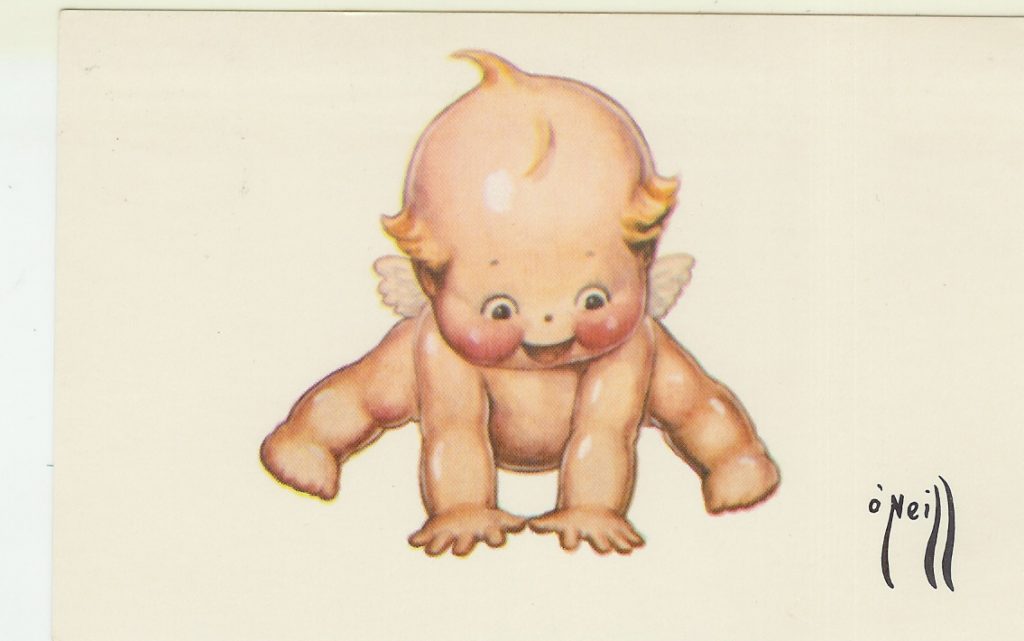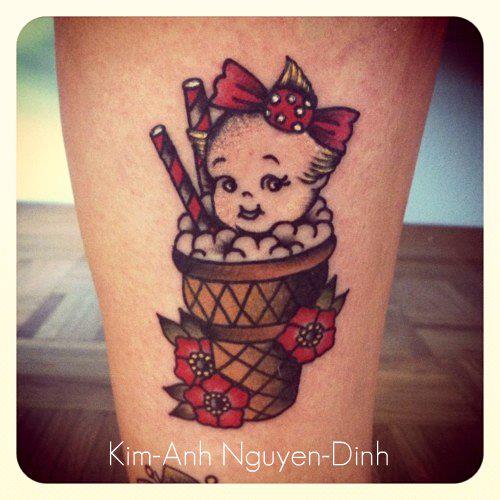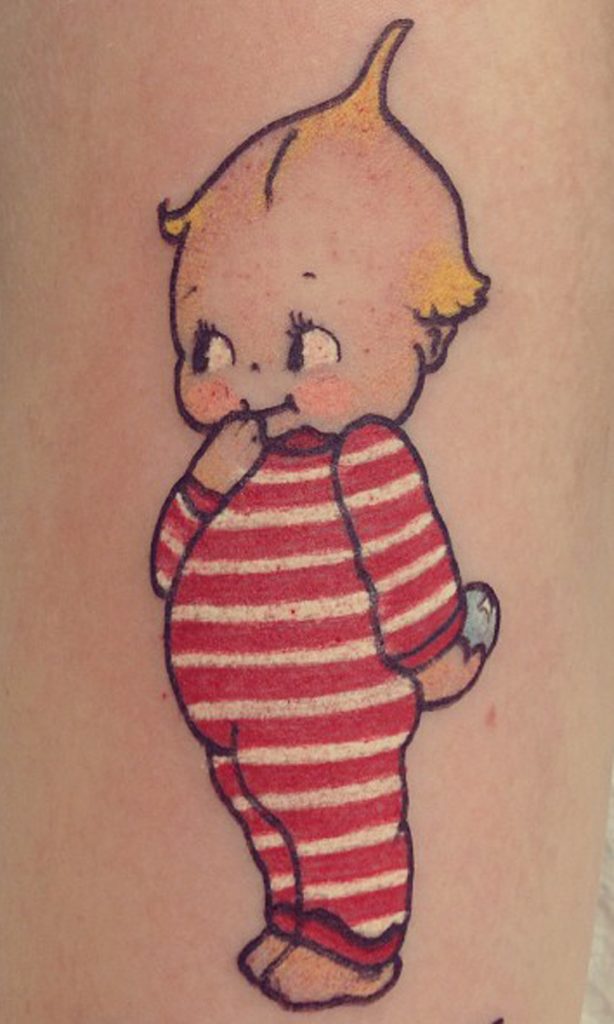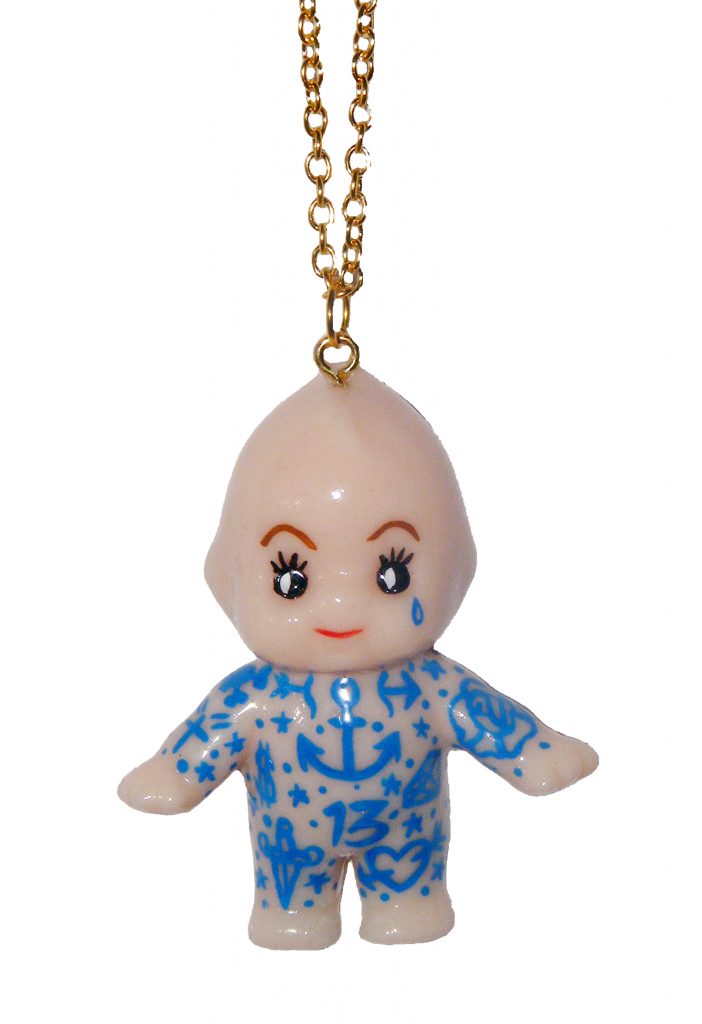The story behind Laurence Moniasse Sessou’s tattoos and scarification
Photography and Art Direction – Josh Brandao / Model – Laurence Moniasse Sessou / Words/Story – Laurence Moniasse Sessou and Alice Snape / Illustrations and Set Dressing – Katerina Samoilis / Styling – Olivia Snape / Make-up and Hair – Anna Wild using Nars / Septum Ring – Studio Lil Art and Design / Earrings – Manaka Handmade / Thanks to India Ame ‘Ye’
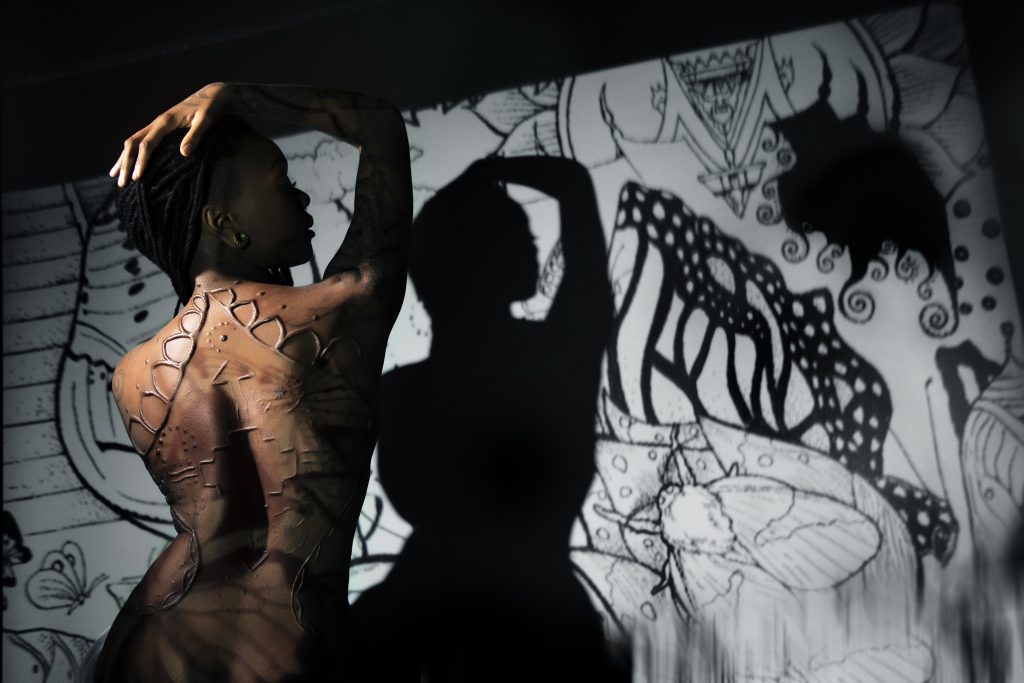
From a very young age, I have always been fascinated by body art, everything that seemed a bit forbidden and weird, I pay attention to. I was always a dreamer and would often get in trouble for not conforming and being different (mainly from my peers in the neighbourhood). I grew up in a small town in France called Evreux. It wasn’t easy being a teenager, I’ve experienced a fair bit of bullying while growing up.
I have always been fascinated by body art, everything that seemed a bit forbidden and weird
I came to London for the first time in 1999, when I was 20 years old, to pay a visit to my sister. From that moment, I knew I had to come back to that sense of freedom. London was so big and messy, but I knew I could find myself in that mess. A year later, in 2000, I came back, supposedly, for one year to learn English – but I never looked back. I graduated in 2007 with a Bsc Natural Therapeutics (Bodywork and Neuromuscular therapy) from the University of Westminster. I have been practicing for over eight years now and hold two busy practices in London.
While I was at university, I started travelling, Thailand was my first big trip – I was amazed by the Thai culture and, of course, tattoo was part of it. One of my friends at the time had her full leg tattooed, I thought it was insane. I loved it, but never thought it would be my cup of tea. This idea of having something permanently on my body freaked me out. But as I travelled more through the world, I became more open to many things, including spirituality and body marking. My first tattoos were two little ankhs on my wrists. I was 21 and in London at the time. Then I went on another trip to Thailand and decided to get
a fairy on my right shoulder, it was an African fairy that looked nothing like a fairy after a few months. I had started losing a bit of weight and her face disappeared.
I love flowers. They are beautiful, feminine – I just love they way they always face towards the sun
I guess the big trigger to my transformation started in Mexico, when I went to Palenque for the first time. That’s where I met tattoo artist Sanya Youalli, and we had a chat. I was originally there just to view her work, but our conversation ended with starting to decorate my left arm with flowers and spirals. I love flowers. They are beautiful, feminine – I just love they way they always face towards the sun, I like to see myself as a flower and always look and walk towards the light. I love the warmth and the way the sun kisses my skin. Spirals symbolise infinity, this ocean of opportunity that never ends. I could have my body covered in them, I can’t see myself falling out of love with these symbols. Sanya and I became close friends, we’re like sisters, every time I go to Mexico, she continues work on my arm and when she came to London for the tattoo convention, last year, she stayed at my home and we carried on.
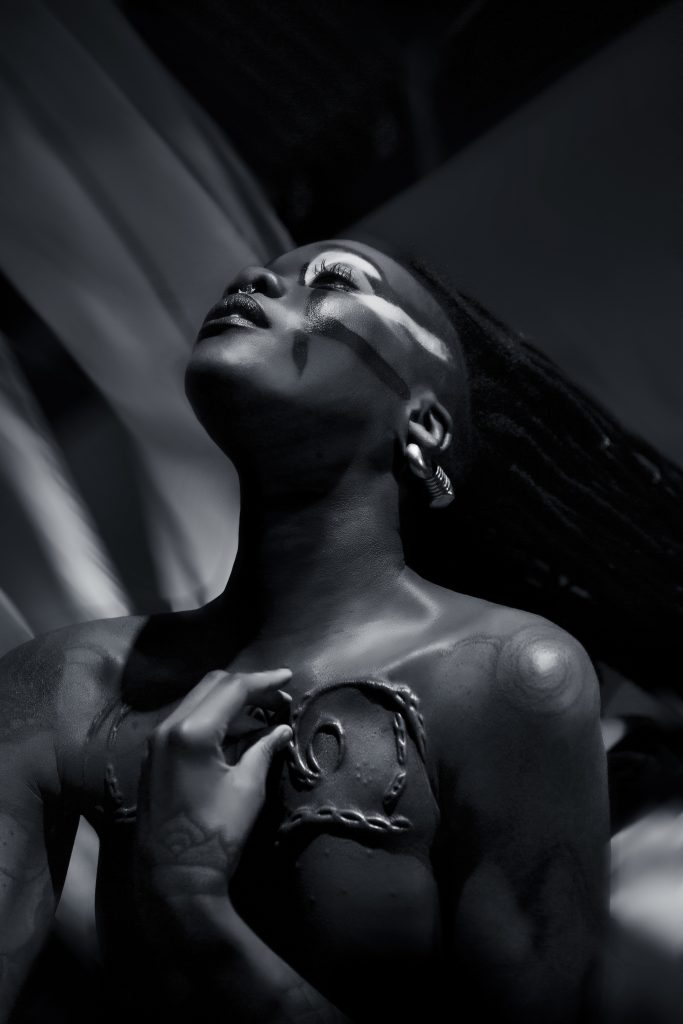
Then I was looking for another artist to do a cover up of my right arm, Sanya had started doing some kind of removal work for the fairy, but we didn’t get a chance to cover it completely. I knew I wanted it to be covered as soon as possible, so I searched for another artist. I found Touka Voodoo at the Divine Canvas studio – again it was an instant connection. I loved his work, so Touka did the cover up of my right shoulder and we carried on the theme of flowers and spirals – I have a full sleeve now. I also met Iestyn at Divine Canvas, I knew the kind of work he specialised in: scarification and piercings. I remember thinking to myself, “Who on Earth in this age would want to go through this?’ He proposed to perform scarification on me as he’d never worked on black/African skin before. I told him, “No way! You will never cut my skin, never!’
About a year later, I was going through some changes in my life and my spiritual practice started to become more important. I initially wanted to tattoo my back with some symbols of my spiritual path, I spoke to my sister about it and she thought that my skin tone was so beautiful, if I did tattoo my back, my arm work would disappear. That is when the idea of the scarification came to me. I thought it would be a way to embrace my spiritual practice, as well as my tribal African roots. One day I went to see Iestyn, we discussed the design and we started. Iestyn knew me for about a year and he understood my journey and where I was coming from – I trusted him fully with it, he was absolutely amazing.
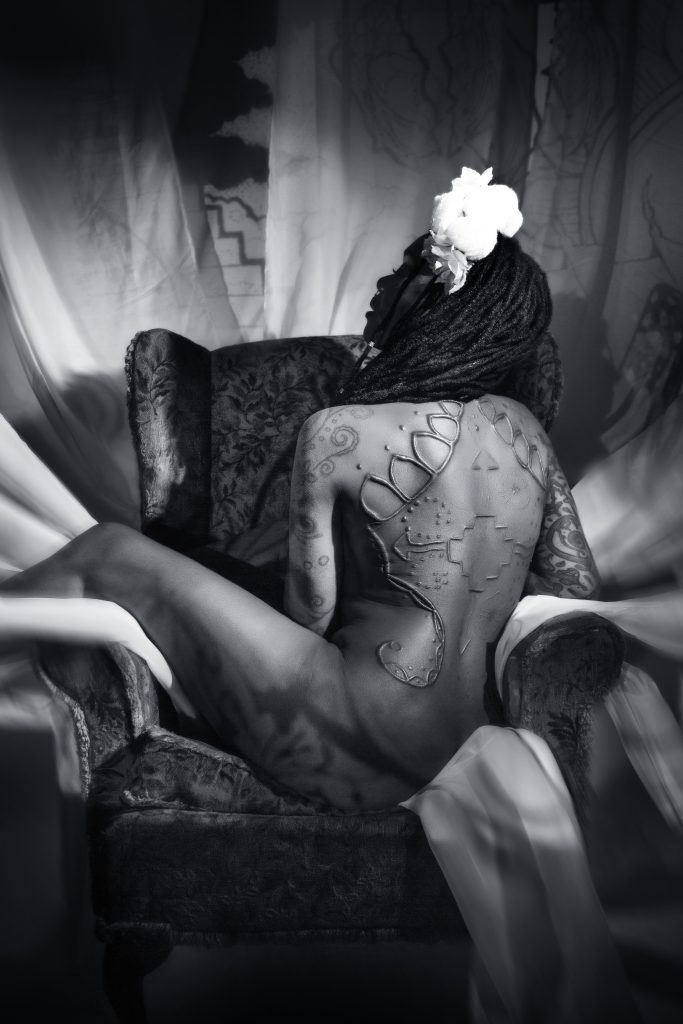
The meaning of the symbols – the cross in the middle is ‘the Chakana’ sacred cross where the fire of life burns, the four arrows around it represent the four nations and four directions, flowers symbolise beauty and femininity, spirals symbolise infinity, and dots for their simplicity – and how lovely they look. To me, it is like carrying my dream in my back: the four nations enjoying the fire of life together in the four corners of the globe, in beauty and harmony with each other and nature… It sounds a bit dreamy, but that is the truth. I live to see a better world and become a better person.
Having the scarification done was very challenging, particularly the healing – it is a long and painful process. I was not been able to sleep on my back for over seven months. When the keloids form, it is very itchy. Receiving the scar wasn’t as bad as people may think, of course, you feel it as the first cut is done without anaesthetic, but there is no other way to go through it, you must feel and transcend the pain – and it is a beautiful feeling. I was very high at the end of it, feeling super-human.
I didn’t think the scar was going to raise that much, I thought I would have a very discreet design on my back, but my body decided how it was going to turn out and I love it! It is quite bold and shocking for some people, but I don’t really care, the journey and the story behind this back is worth it.
The chest scarification was also performed by Iestyn and filmed live by Nick Knight back in May 2013, it was supposed to be used for a music video, but it wasn’t in the end. But, hey, I got paid to have a beautiful piece of body art work on my chest and got the amazing opportunity to work with a genius like Nick Knight. It was a dream come true.
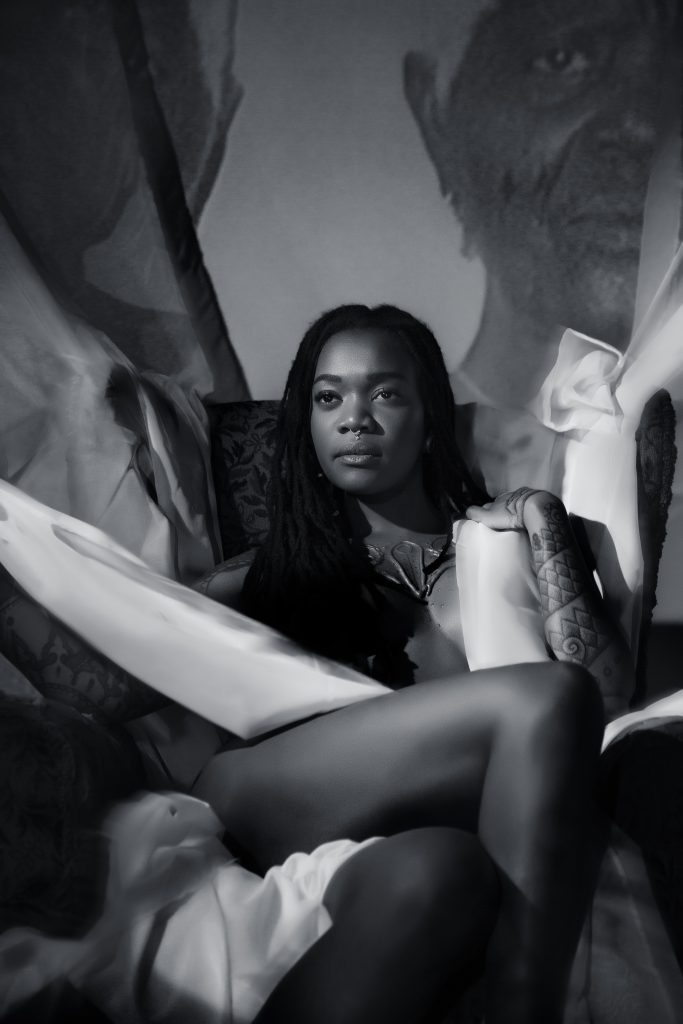
I didn’t realise how emotional I was going to feel about doing this photo shoot for The Modification Issue using pictures of my family, including my mother and grandmothers. I started to have tears in my eyes, because I know how powerful and brave these women are and I know the struggle they have been through in life and in labour. They respectively brought my mother and my father, and my mum brought me into this world. I feel deeply grateful and proud to be a fruit of their lives, I feel they are still living through me, and my nephews and nieces, they are eternal. And I hope that from wherever they are, they are watching over with pride, their lives will always be celebrated.
Laurence’s story was first published in Things & Ink magazine, when we were in print.
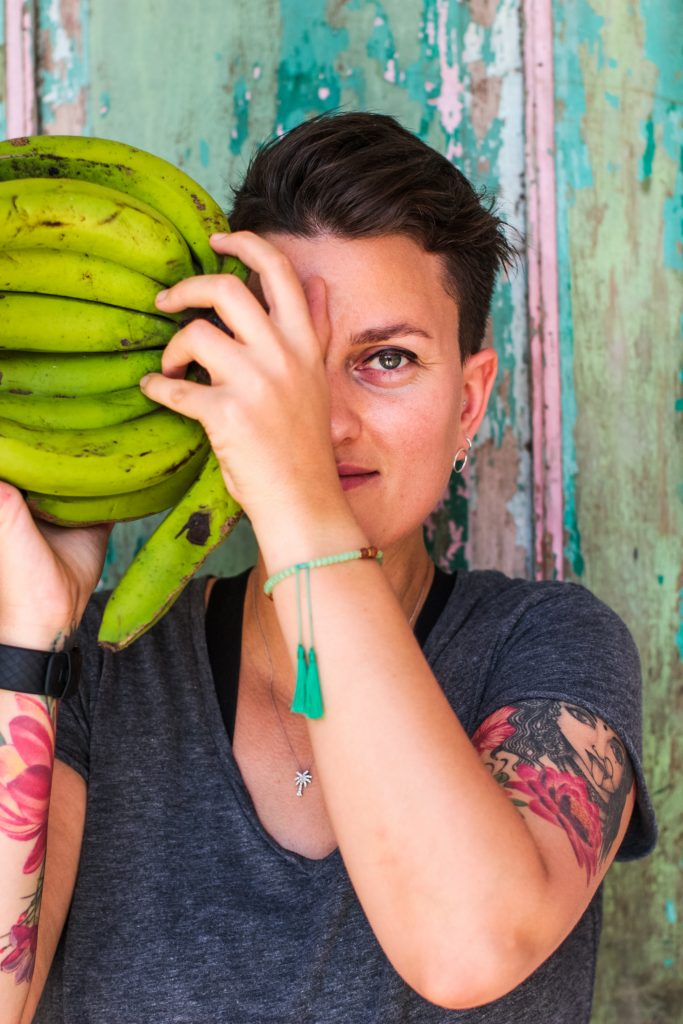
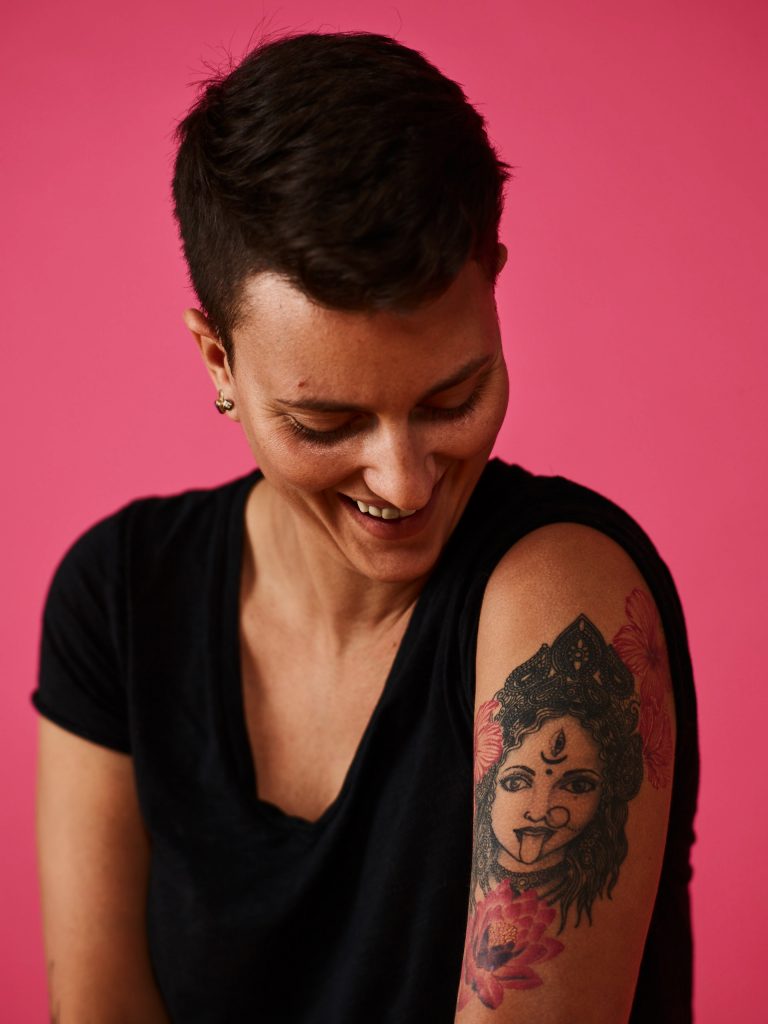
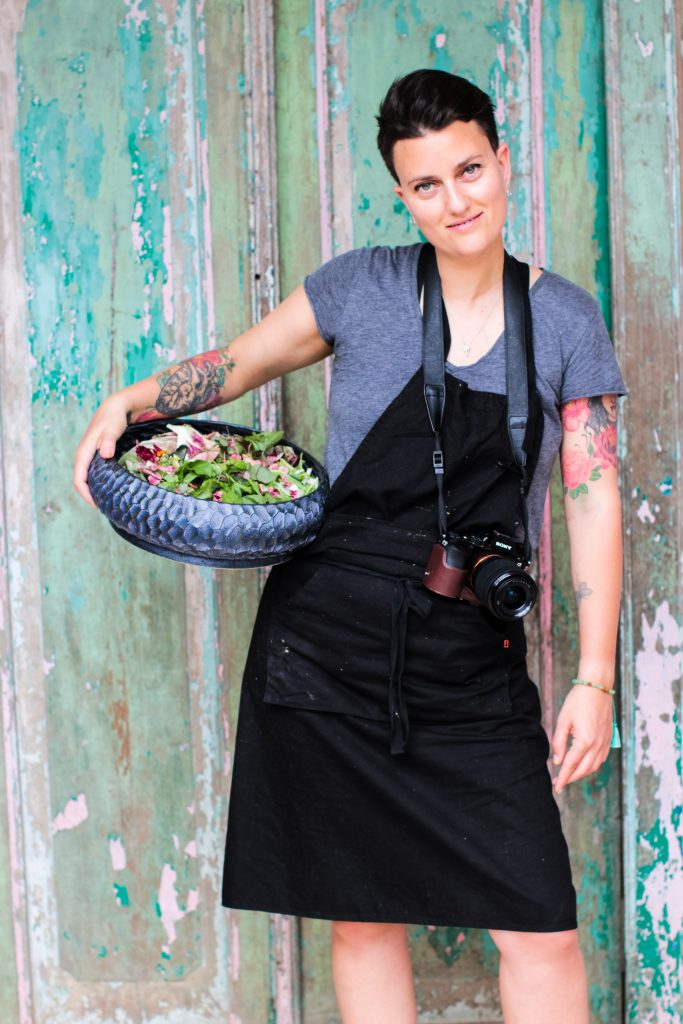




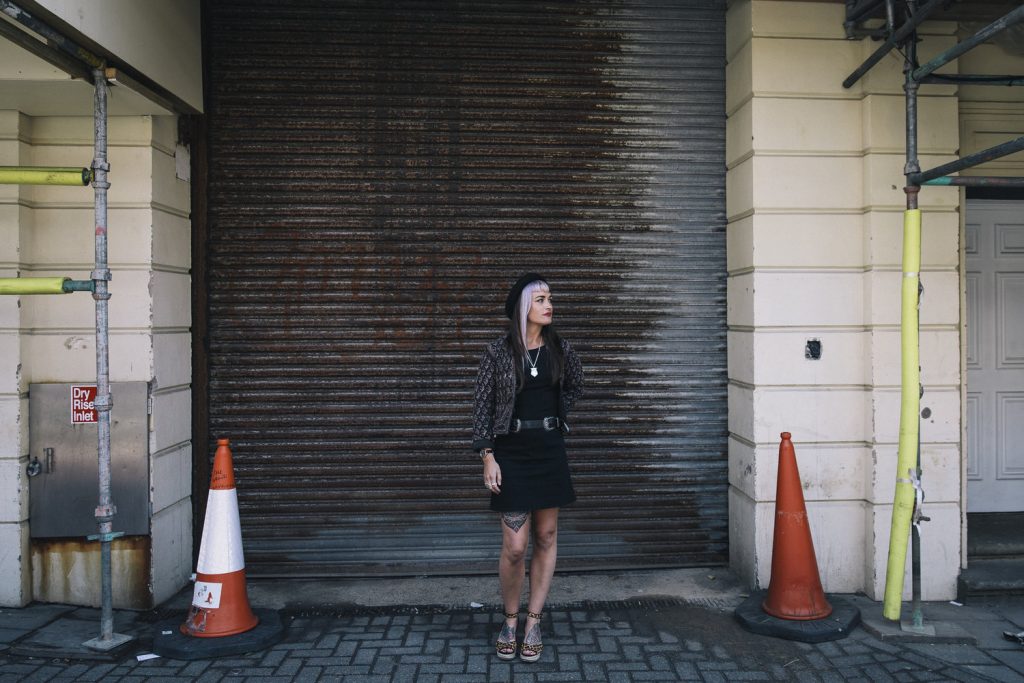
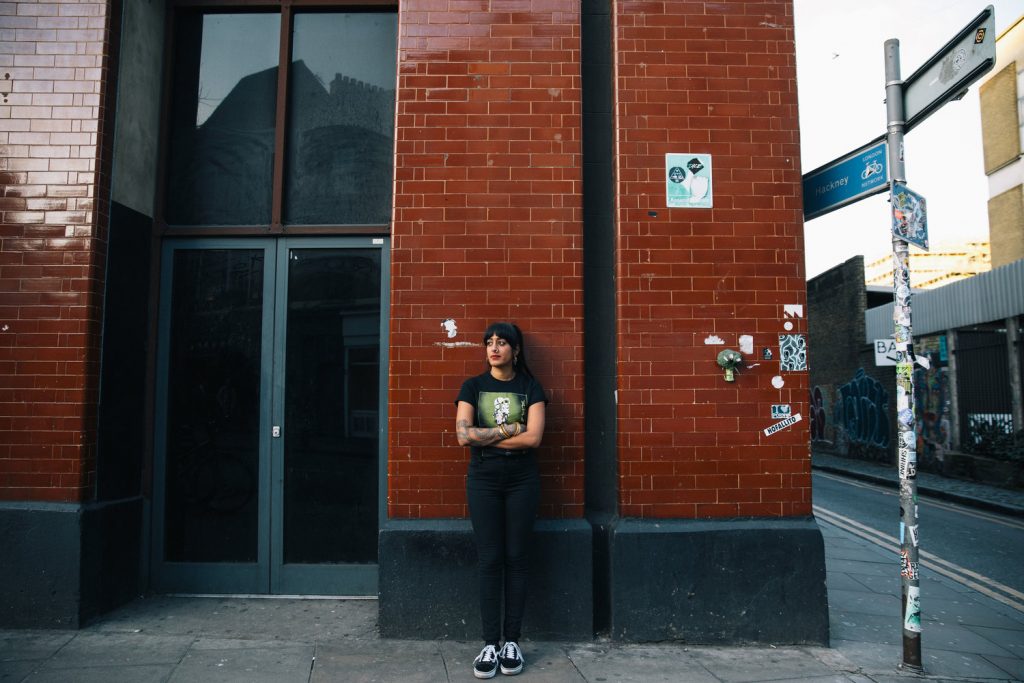
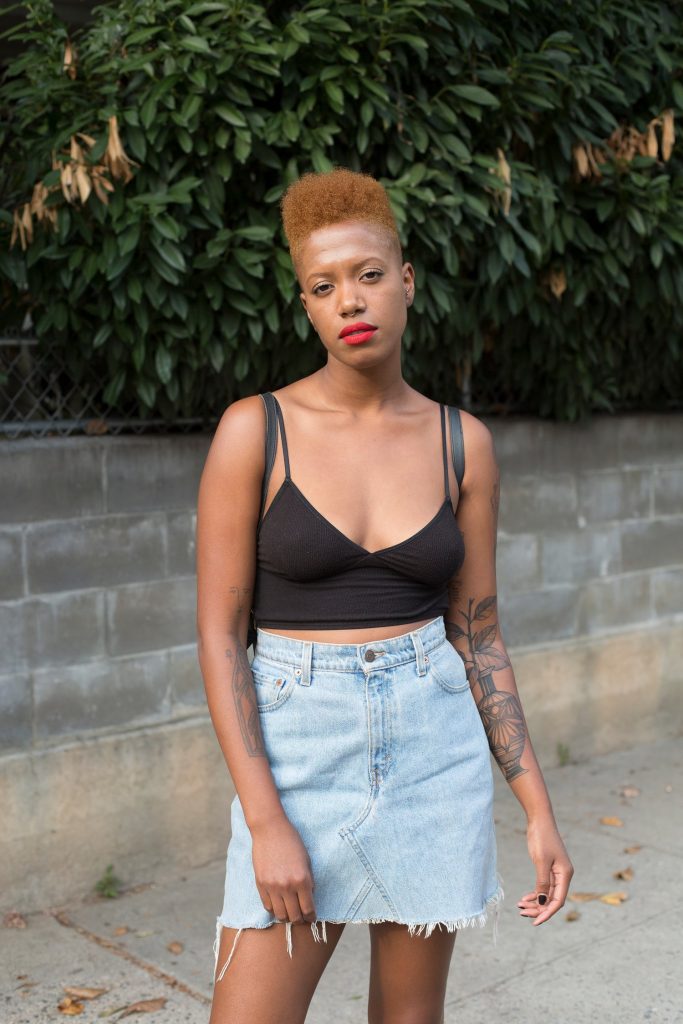
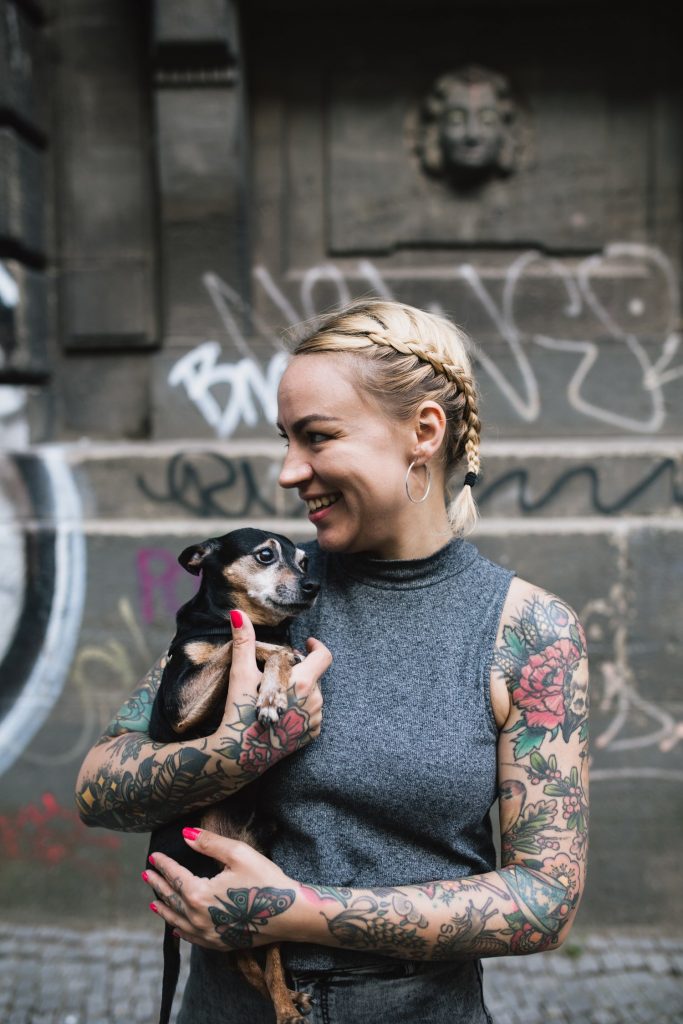
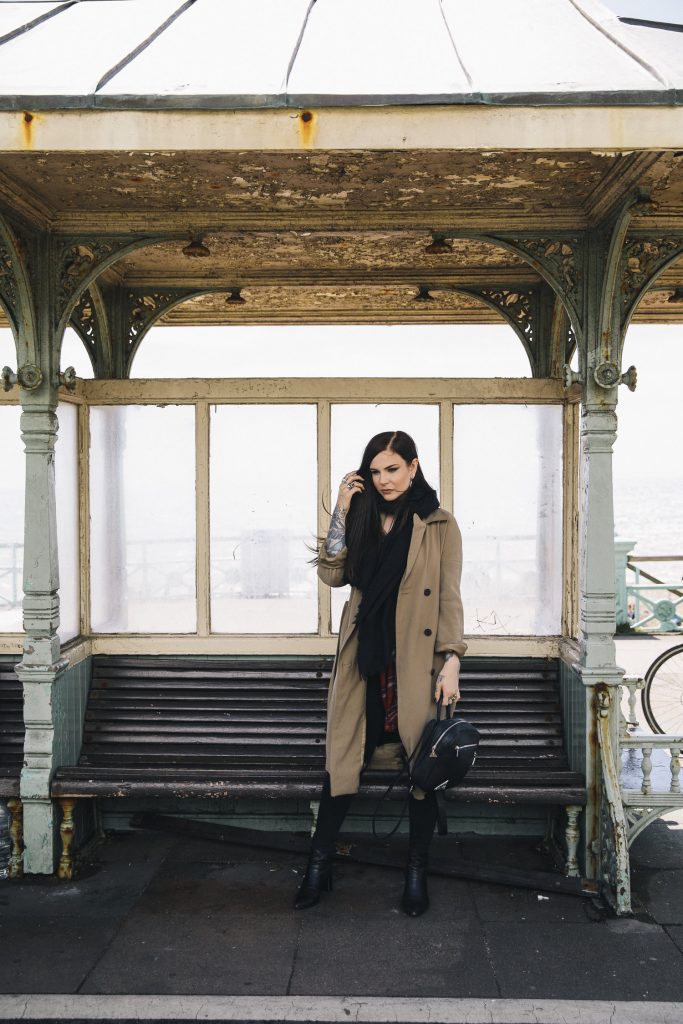
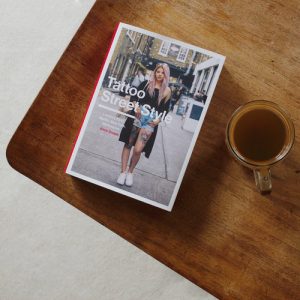
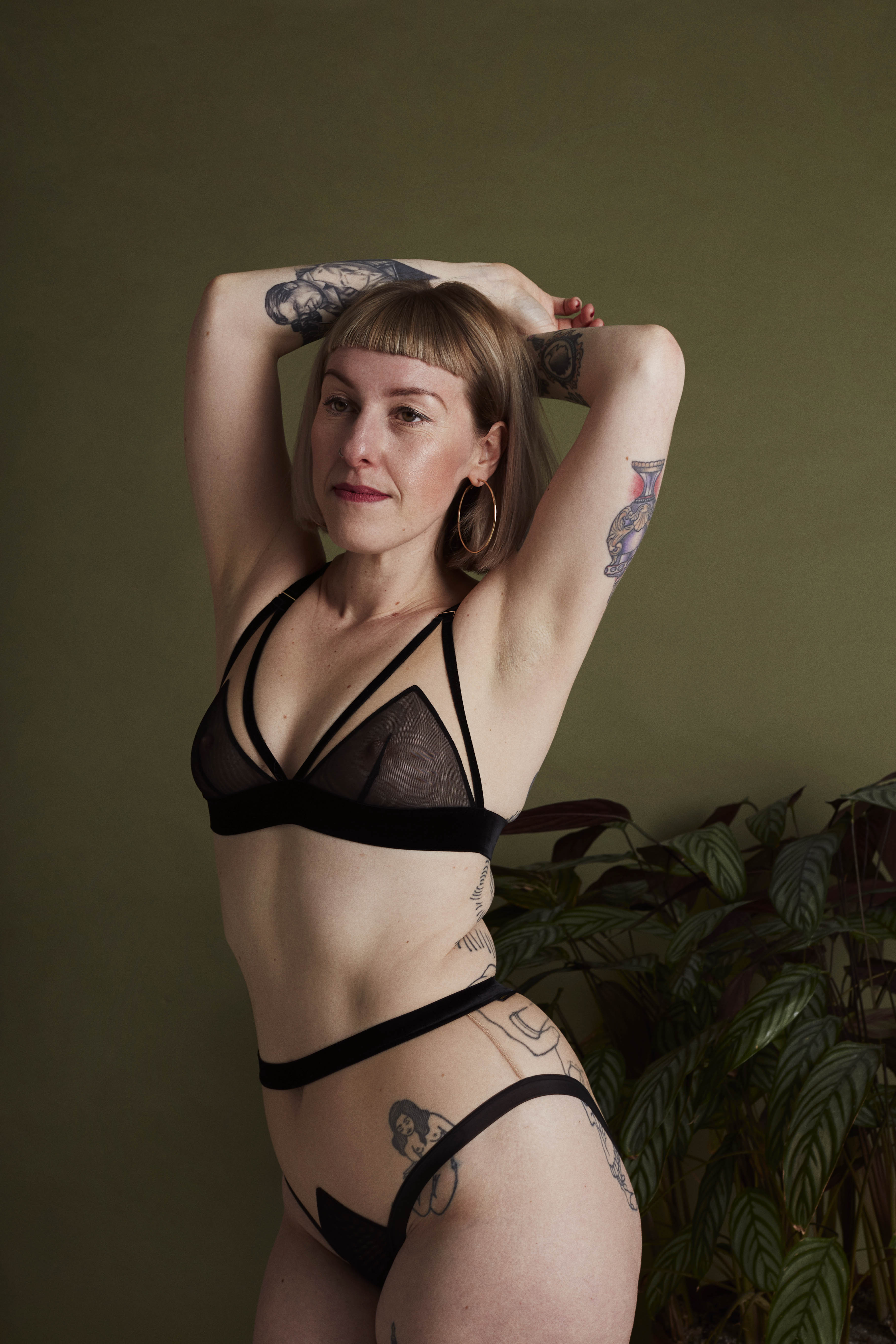
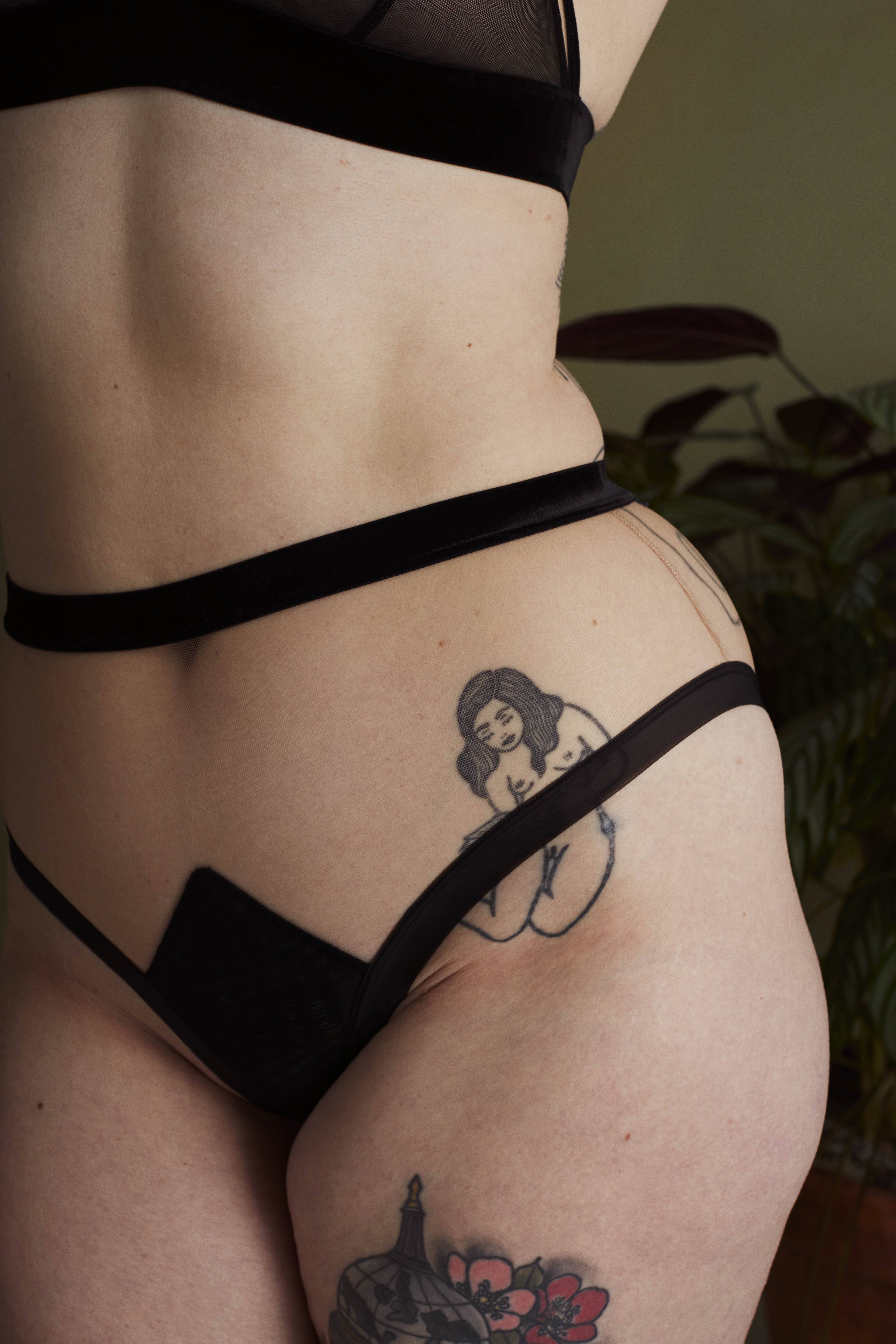
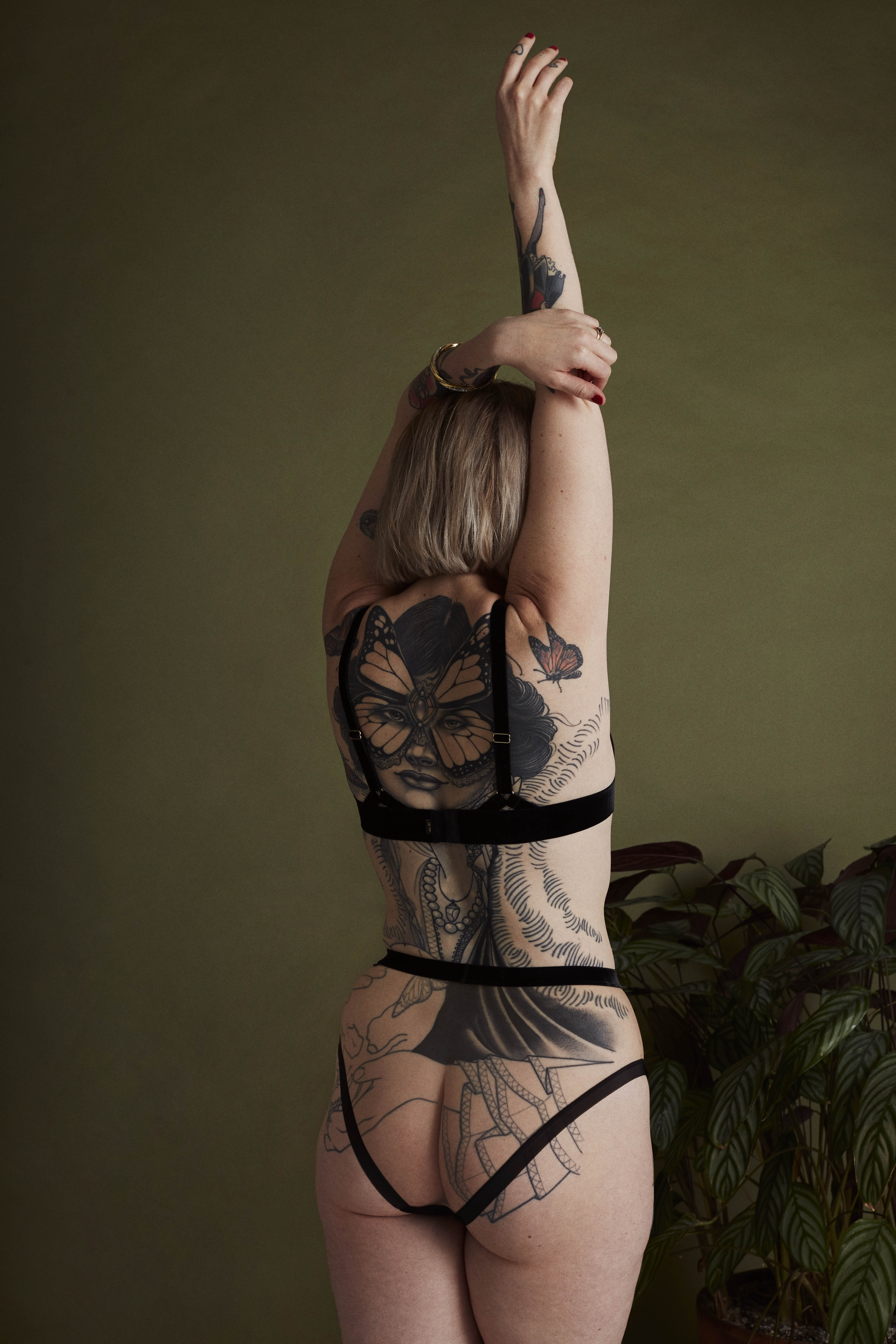
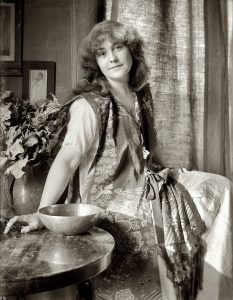 Rose O’Neill first illustrated Kewpie dolls to be featured in the Ladies’ Home Journal, and they swiftly became extremely popular. Born in Germany, their name derived from the word “Cupid”, for the Roman God of beauty.
Rose O’Neill first illustrated Kewpie dolls to be featured in the Ladies’ Home Journal, and they swiftly became extremely popular. Born in Germany, their name derived from the word “Cupid”, for the Roman God of beauty.